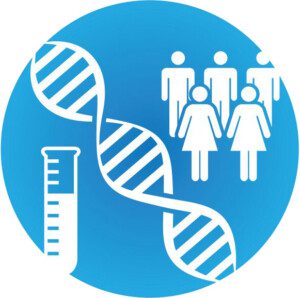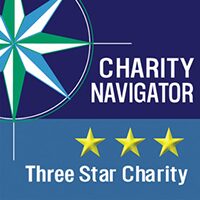 What does ALS mean and when was it first identified?
What does ALS mean and when was it first identified?
French neurologist Jean-Martin Charcot introduced the name “amyotrophic lateral sclerosis” in 1869.1 “Amyotrophic” comes from Greek: “a” means no, “myo” refers to muscle, and “trophic” means nourishment. “Lateral” refers to the areas in the spinal cord where portions of the nerve cells that signal and control the muscles are located. As this area degenerates, it leads to sclerosis, the medical term for scarring or hardening.
ALS was not new when Charcot identified it. The first written record of ALS-like symptoms comes from the Scottish physician Charles Bell in 1824. Until then, although patients probably experienced the symptoms of ALS, the disease itself was unknown.2 Charcot ultimately identified more neurological diseases than any other clinician to date and is widely considered the founder of modern neurology.3
What may seem surprising is that despite all the advances in ALS research, all the various molecular and genetic discoveries have created a greater understanding of this disease, Charcot’s original descriptions of the clinical and pathological descriptions remain essentially the same.4,5
Why is it called Lou Gehrig’s Disease in the U.S.?
Outside the U.S., ALS is often called Charcot (or Charcot’s) disease. So why is it called Lou Gehrig’s disease in the U.S.?
Lou Gehrig played with the New York Yankees for 17 years and was nicknamed “The Iron Horse” due to his ability to play even when injured. His deterioration was first noticed in 1938 when his batting average dipped below .300, and the baseballs that used to go out for home runs were landing much shorter. Doctors thought he had a problem with his gallbladder and advised him to change his diet, but he didn’t improve. He was diagnosed with ALS on his 36th birthday, June 19, 1939. The Yankees designated July 4, 1939, Lou Gehrig Appreciation Day at Yankee Stadium and honored him for his sportsmanship. He died on June 2, 1941, but remained the face of ALS for decades.6,7
In context: Epidemiology today
Critical to the history and future of ALS research is understanding its incidence, prevalence, and demographics — in other words, its epidemiology. The number of new cases per year, or incidence, of ALS worldwide is between 0.6 and 3.8 per 100 000 people. Prevalence refers to the proportion of persons who have a condition at or during a particular time period. Recent studies reported a prevalence of ALS between 4.1 and 8.4 per 100 000 persons.8
One challenge today is that we don’t know the precise prevalence and incidence of ALS because physicians are not required to report ALS cases. However, in October 2010, the CDC’s Agency for Toxic Substances and Disease Registry, launched the National ALS Registry It collects epidemiological information through risk factor surveys and serves as a biorepository with 8,700 samples. It’s also a funding source for studies that look at the environmental and genetic factors behind the disease.9,10
Moving ahead
Yes, the clinical understanding of ALS remains largely unchanged, and many aspects of its epidemiology remain unclear. But as research continues — especially into the role of genetics — we come closer to finishing the work that Dr. Charcot started 150 years ago.
Notes
1 Goetz CG. Amyotrophic lateral sclerosis: early contributions of Jean-Martin Charcot. Muscle Nerve. 2000 Mar;23(3):336-43
2 Faulds, C. “A Different Sort of Hall-of-Fame: Gehrig, Charcot, and ALS Through History” ALS Therapy Development Institute
3 da Mota Gomes M, Engelhardt E. Jean-Martin Charcot, father of modern neurology: an homage 120 years after his death. Arq Neuropsiquiatr. 2013 Oct;71(10):815-7. doi: 10.1590/0004-282X20130128.
4 Katz, J. S. and Dimachkie, M. M. et al.: Amyotrophic Lateral Sclerosis: A Historical Perspective. Neurologic Clinics 33 (2015)
5 Kumar, D. R. et al.: Jean-Martin Charcot: The Father of Neurology. Clinical Medicine & Research 9 (2011) https://www.ncbi.nlm.nih.gov/pmc/articles/PMC3064755/
6 Faulds, C. “A Different Sort of Hall-of-Fame: Gehrig, Charcot, and ALS Through History” ALS Therapy Development Institute
7 “Lou Gehrig and the History of ALS,”ALS Association
8 Longinetti, E., et al. Epidemiology of amyotrophic lateral sclerosis: an update of recent literature, Current Opinion in Neurology: October 2019 doi: 10.1097/WCO.0000000000000730
9 Raymond, J. et al.: History of vigorous leisure-time physical activity and early onset amyotrophic lateral sclerosis (ALS), data from the national ALS registry: 2010–2018. Amyotrophic Lateral Sclerosis and Frontotemporal Degeneration (2021)
10 What Causes ALS? National Registry Seeks Answer, ALS News Today, May 27, 2021
 What does ALS mean and when was it first identified?
What does ALS mean and when was it first identified?





